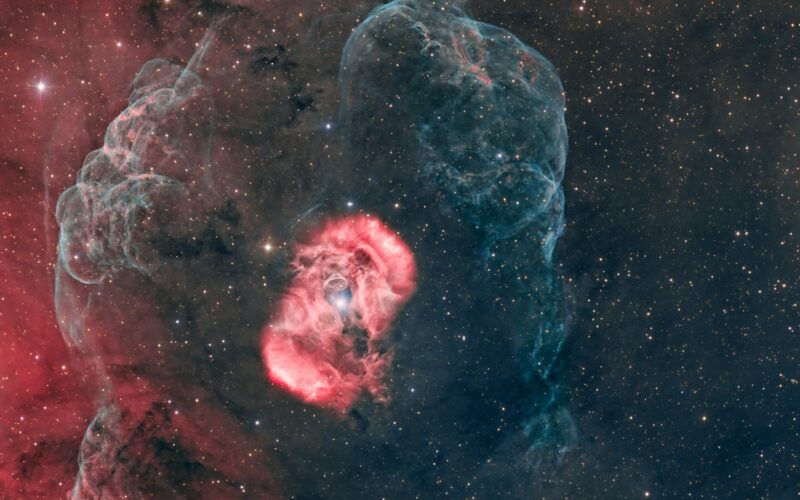Astronomers have long puzzled over the intricacies of the “Dragon’s Egg” nebula, a stunning cloud of gas and dust housing two large stars. What sets these stars apart is their magnetic fields – one possesses a magnetic field akin to our sun, while the other does not. This peculiarity, combined with the rarity of massive stars within nebulae, has intrigued researchers for years.
Now, a recent study published in the journal Science claims to have unraveled this mystery, shedding light on the origins of magnetic fields in massive stars. According to the study’s lead author, Abigail Frost, an astronomer at the European Southern Observatory in Chile, the answer lies in a phenomenon known as stellar fratricide. In essence, the larger star in the binary system devoured its smaller companion, resulting in the mixing of their stellar material and the creation of a magnetic field.
The violent merger between the two stars is believed to have ejected material into space, forming the nebula we observe today. This conclusion is supported by computer simulations predicting that such mergers could generate magnetic fields in the resulting combined star. Hugues Sana, the senior author of the study from KU Leuven in Belgium, describes these findings as the “observational smoking gun” confirming this scenario.
Located approximately 3,700 light-years from Earth in the constellation Norma, the Dragon’s Egg nebula houses two stars bound together in a binary system. Observations conducted over nine years using the Very Large Telescope in Chile provided valuable insights into this celestial phenomenon.
The larger star, possessing a magnetic field, is about 30 times more massive than our sun, while its companion is approximately 26.5 times more massive. Their orbits vary between seven to 60 times the distance between Earth and the sun.
The Dragon’s Egg nebula, named for its proximity to the Fighting Dragons of Ara nebula complex, originated from a triple star system that formed around 4-6 million years ago. The merger event, which occurred relatively recently on a cosmic scale – about 7,500 years ago – resulted in the ejection of gas and dust into space, forming the nebula.
This discovery provides valuable insights into the formation of magnetic fields in massive stars, which account for about 7 percent of all such stars. Understanding these magnetic fields is crucial, as they store immense energy and can impact space weather and communications systems.
Accompanying the study is a visually striking image of the Dragon’s Egg nebula, showcasing the intricate interplay of physics and chemistry within this cosmic wonder.








